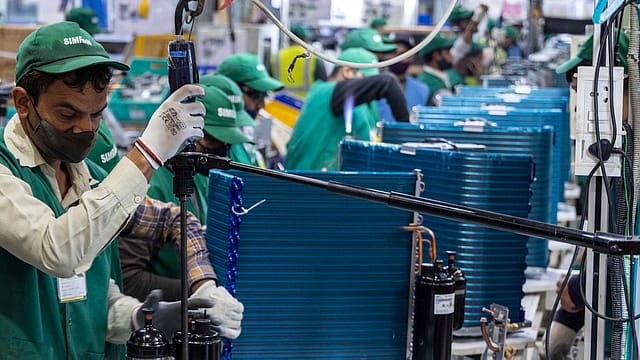Cause of concern! Bank credit to manufacturing declines
ADVERTISEMENT

The share of manufacturing sector in the total non-food bank credit declined from 24% to 13.5% in the last decade (2011-12 to 2020-21) due to banks' shift towards lending to personal loans, infrastructure, weaker sections and services sectors, an analysis by MVIRDC World Trade Centre (WTC) Mumbai shows. The outstanding bank credit to the manufacturing sector as a share of manufacturing GDP also declined from 16% in 2011-12 to 13% by 2020-21, it points out.
The analysis, based on Reserve Bank of India (RBI) data, also shows that bank credit to 10 out of the 15 sectors declined as a share of total bank credit. This includes sectors such as base metals, textiles, chemicals, food processing, engineering, automobiles and gems & jewellery.
Noting that the decline in bank credit exposure to manufacturing sector is also reflected in the slow growth in manufacturing investment in the country, WTC analysis says that gross capital formation (a proxy for investment in the economy) has grown at a tepid pace of 2% CAGR in the manufacturing sector during the last 10 years from 2011-12 to 2020-21, compared to a growth of 6% in overall investment in the economy. "The share of manufacturing in India's gross capital formation also shrunk from 17.2% in 2011-12 to 14.36% in 2020-21. On the other hand, sectors such as transport, storage, communication, trade repair, hotels and other services witnessed growth in their share of total capital formation in the economy," it says.
"The stagnancy in bank credit exposure to these core manufacturing sectors does not bode well for our Make in India and Aatmanirbhar program. It is welcome that the share of personal loans, credit to weaker sections and credit to the services sectors have been growing in the overall bank credit. At the same time, we need to promote bank lending to manufacturing sectors, especially in labour intensive segments such as leather, textile, food processing to prevent a situation of jobless growth," Vijay Kalantri, chairman at MVIRDC WTC Mumbai, says.
December 2025
The annual Fortune 500 India list, the definitive compendium of corporate performance, is out. This year, the cumulative revenue of the Fortune 500 India companies has breached $2 trillion for the first time. Plus, find out which are the Best B-schools in India.
The analysis notes that in the last 13 years since 2008, the share of personal loans in total bank credit grew from 23% to 27%, while the corresponding figure for credit to weaker sections has grown from 4.8% to 7.5%. Similarly, the infrastructure sector witnessed higher share in overall non food credit, up from 9.3% to 10.2%. The WTC report says that as the central government establishes a dedicated financing institution for the infrastructure sector and as asset monetisation pipeline is implemented effectively, the burden of infrastructure financing on banks will reduce, which in turn may enable banks to focus more on funding to the manufacturing sector.
